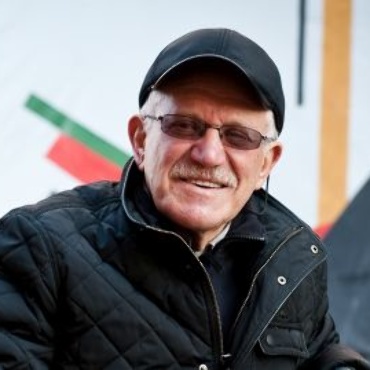Žūrija 2014
Konkursa programma

Aleksandrs Mitta — He studied engineering (graduated in 1955), then worked as a cartoonist in art and humour magazines. In 1960 Mitta graduated at the film directing faculty of the VGIK. Mitta's career as film director and screenwriter spans from the 1960s until the 2010s. Among the movies are Gori, gori, moya zvezda (Гори, гори, моя звезда, 1969) about actors trying to survive and work during the time of the Russian revolution or the high budget catastrophe movie Air Crew (1979). For his work Mitta obtained numerous awards in the Soviet Union and Russia.In 1980, Mitta was a member of the jury at the 30th Berlin International Film Festival.Mitta supported the Russian annexation of Crimea in 2014, even though he also noted that he didn't like that it serves as a distraction for many from other problems Russia is facing.

Konstantīns Bogomolovs — Aesthetically and politically a radical, Konstantin Bogomolov (b.1975) has been described in the international Press as the “enfant terrible” of the Russian theatre.His parents were film critics. He studied Literature at Lomonosov Moscow State University (MSU) and Direction at the Russian Academy of Arts (RATIGITIS).The winner of numerous awards and distinctions in his home country, Bogomolov has worked with historic Russian theatres (the Moscow Art Theatre and the Leninist Komsomol Theatre / Lenkom) while staging productions in equally prestigious European theatres and international theatre festivals, including the Polish National Theatre in Warsaw, the Festwochen in Vienna, and the Theaterformen in Hanover.

Andrejs Biļžo — Bilzho became aware of his penchant for caricature while going to a medical school. Fortunately for Bilzho, his medical profession and his hobby didn’t clash. As a result, a number of publications began showing interest in his works. In the meantime, Bilzho was acquiring skills in the field of graphics. He took up painting later on. For sixteen years, Bilzho was a staff cartoonist with the newspaper Kommersant. Afterwards, for nearly five years he drew cartoons for another Russian newspaper called Izvestia. Bilzho quit after realizing that the newspaper’s editorial policy had become at odds with his artistic freedom. These days Bilzho posts his drawings and commentaries in his personal blog at the radio Ekho Moskvy web site. His works are also printed by the magazines Dilenant and Russki Pioner. Books containing his drawings, writings and photographs are published on a regular basis. It’s hard to get by without taking an ironic stance on life and oneself, and therefore Bilzho keeps on “rendering habitable” his artistic world in a cheerful manner, like a good doctor should do. He’s doing his job with confidence. Fighting shy of any broad statements, Bilzho is busy knocking down the partitions between the genres as he shows his utmost disrespect to the hierarchies of culture